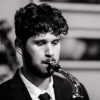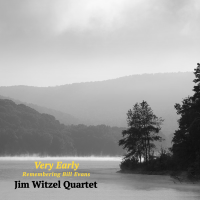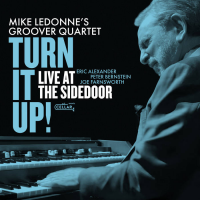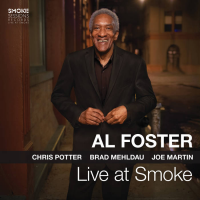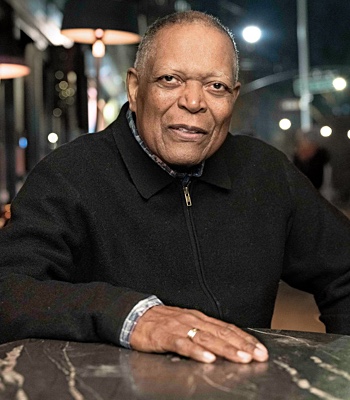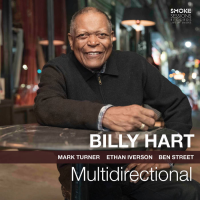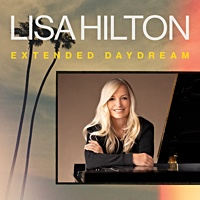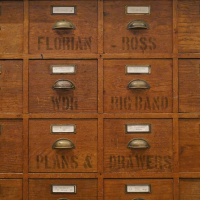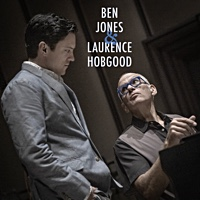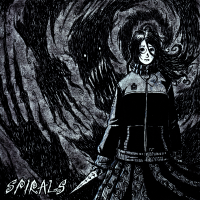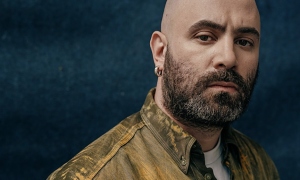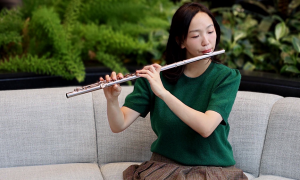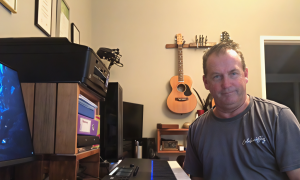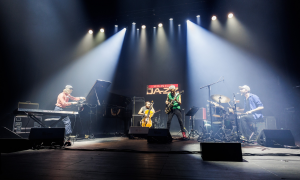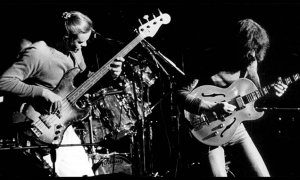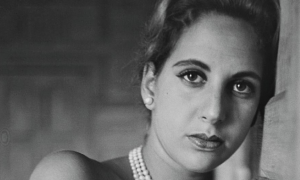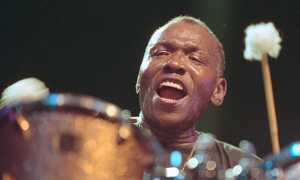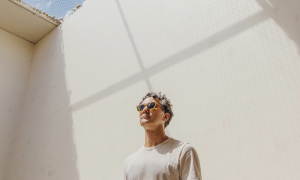Home » Jazz Articles » Take Five With... » Take Five with Saxophonist Inbar Solomon
Take Five with Saxophonist Inbar Solomon
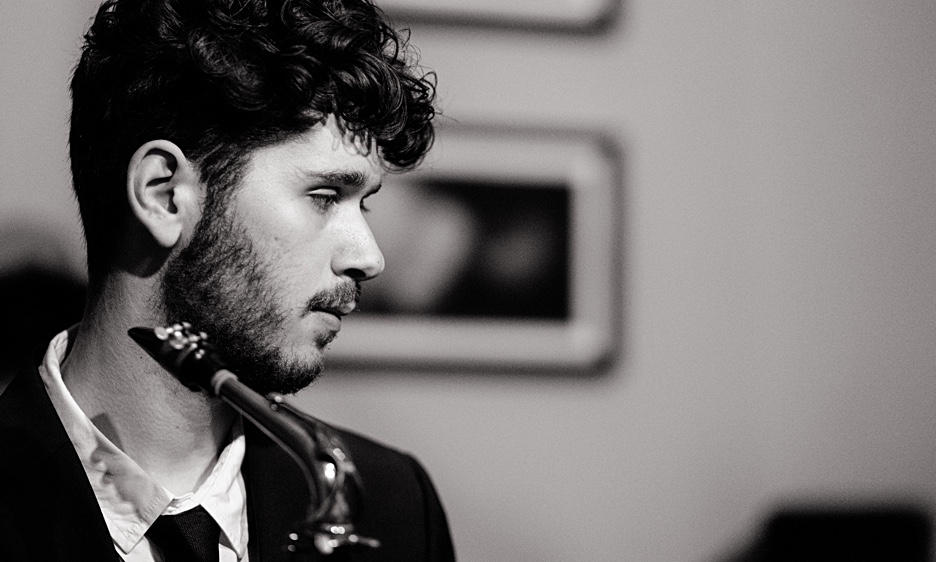
Courtesy Yoav Trifman
Meet Inbar Solomon
Inbar Solomon is a saxophonist, flutist, and composer originally from Tel Aviv, Israel who is now based in Brooklyn, New York. A graduate of The New School's Jazz and Contemporary Music program, he received significant merit scholarships from both The New School and Berklee College of Music. Solomon has appeared at major international festivals such as the Bern Jazz Festival in Switzerland and the Jerusalem Jazz Festival in Israel. He has also performed at leading venues in Tel Aviv, including Beit Haamudim, Shablul, and Haezor, and he is active on the New York jazz scene, performing regularly across the city. As a collaborator, he has worked alongside highly regarded musicians including Jeremy Pelt, Joe Farnsworth, Pasquale Grasso, Shai Maestro, and Ari Roland. He currently leads a sextet in New York that focuses on original compositions and fresh arrangements of bebop repertoire, reflecting both his deep respect for the tradition and his personal vision as a bandleader and composer.Instruments:
Alto Saxophone, Baritone Saxophone, Flute.Teachers and/or influences?
In New York, my biggest influence has been Chris Byars. I've had the chance to study and work with him, and he's taught me a lot about arranging, composition, and how to think about writing for a band. A lot of what I do with my sextet comes directly from things I learned from him. On the saxophone, my strongest inspiration has always been Charlie Parker. Everything in my playing goes back to him. Beyond Parker, I've spent years listening to and studying the bebop masters, musicians like Bud Powell, Barry Harris, Dizzy Gillespie, and Elmo Hope. Their music is the language I try to continue and expand in my own way.I knew I wanted to be a musician when...
It started when I was nine years old. I had to take recorder lessons at school. To my surprise, I loved it. I practiced constantly, and eventually my teacher told my mom I had perfect pitch, something we did not even understand at the time, but it made me want to keep playing. Soon after, he showed me a saxophone for the first time, and the second I saw it I knew that was the instrument for me. For years I practiced without really knowing what jazz was, until some friends introduced me to Charlie Parker. Hearing Bird for the first time changed everything. I suddenly understood what the saxophone was capable of, and I wanted to be part of that tradition. The moment I truly knew I wanted to be a musician came at my first live show. The thrill of playing for an audience, the energy in the room, and then the fact that we got paid afterwards completely blew my mind. I had never imagined that I could actually make money doing something I loved so much. From that night on I knew this was what I wanted to do with my life.Your sound and approach to music:
On the saxophone, I go for a dark and soft sound. I never connected with the bright, in your face kind of alto tone, so I made it a point early on to shape something different, closer to how I hear the music in my head. I also perform on baritone saxophone and flute, which give me more colors to work with and help me approach the music in a broader way. Switching between those instruments reminds me that sound is not just about the horn, it is about how you want the music to feel. I see myself as part of the bebop tradition, but I also believe that there is no such thing as playing music without having your own voice. Every musician's life and experiences are different, and that always comes out in the music. For me, it has never been about putting the spotlight on myself. It is about putting the spotlight on the music and creating a moment for the audience. A story that really shaped my approach happened when I went to a high school midterm recital in Williamsburg. The students walked on stage in t-shirts, looking like they did not want to be there. They played a couple of Charlie Parker tunes and probably missed about a third of the notes, but that was not what struck me. What I noticed was the audience. For most of them it was probably their first time hearing jazz live, and I knew from the way it went that it would also be their last. That stayed with me. I made it my goal to give people the opposite experience, to make them fall in love with jazz, to make them leave the room wanting to hear more. That is what drives my sound, my writing, and the way I play with a band.Your teaching approach:
When I teach, I think first about who is sitting in front of me. With new students, I see it as a chance to shape the way they might end up seeing music for the rest of their lives. That responsibility is powerful. I try to make the instrument feel approachable and exciting from the very beginning, so they connect with it in a way that makes them want to keep going. With students who already have playing experience, my approach changes. I try to stay out of the way and respect the instincts they have already developed. Instead of saying "you have to do this," I focus on giving them tools, offering advice, and correcting habits that might hurt them in the long run. I want to support their natural direction rather than rewrite it. I also believe in balance. I was never the book-smart type of player myself. I always led with my ears first and my brain second. Every time I was introduced to a new concept, I realized I already knew it by sound before I knew it by name. That is how I teach: theory and ear together, so that knowledge becomes something you feel as well as understand. Above all, I see myself as a mentor, especially for younger musicians. I was fortunate to have a teacher who cared about me as a person as much as a saxophonist. When I was not in the mood to practice, sometimes we would just talk about music or even go play basketball. That taught me that early lessons are not about training someone to be the best saxophonist in the world. They are about making a young person fall in love with their instrument. My goal is to give that same kind of support and care, because that is what creates musicians who want to play for life.Your dream band:
My dream band is the one I am already building. I am not interested in imagining a group of legends from the past, because the past belongs to the past. What excites me is working with the musicians who are around me now, people I know and trust, and shaping something together that feels alive in the moment. For me, it is never about finding the "best" player for a role. Technical perfection does not matter if there is no chemistry. I only want to work with musicians I like and who I have a real connection with, because that is what makes the music strong. When you have trust and friendship on stage, the audience feels it right away. When I give music to my band members, I do not write "tenor" or "trombone" on the chart. I write their names. Everything is personalized, from the notes I choose, to the voicings, to the way I arrange who takes the solo. I do not write music and then choose the musicians. I choose the musicians and write music for them. That is what makes this band my dream band.Your favorite recording in your discography and why?
Right now my favorite recording is of my sextet. That group represents my sound today and where I am as a bandleader. For me, recordings are not just about capturing the notes, they are about capturing the chemistry between the musicians. In this case, it is the group I write for, arrange for, and lead, and everything about the music is shaped by their sound and their personalities. These recordings show the energy, the interaction, and the direction I am moving in musically.What do you think is the most important thing you are contributing musically?
I think the most important thing I am contributing is a commitment to the tradition. Music today is often going in the wrong direction, where people skip over the foundation and think they already know everything. For me, the tradition is where the real substance is, and I want people to realize that. At the same time, I know it is not enough to just repeat the past. My role as a bandleader and arranger is to give bebop a new outfit, to make it approachable and inviting for today's audiences. Ultimately, my mission is to make people fall in love with jazz-the real jazz that comes from Prez, Hawk, Bird, Bud, Dizzy—while keeping it alive and fresh for the present.How would you describe the state of jazz today?
Jazz is always changing, because life is always changing. That is natural. What I find difficult is that what used to be modern jazz is now called traditional, and many people do not study the history deeply enough. They might listen to Herbie Hancock or Wayne Shorter and think that is where the tradition starts, without realizing that everything they did came from Lester Young and Coleman Hawkins first. Without that understanding, the music can lose its meaning. I try to take traditional jazz and make it approachable, so that audiences and musicians both can connect to it in a way that is honest and exciting.What are some of the essential requirements to keep jazz alive and growing?
Education is the key, but it has to be done in the right way. You cannot tell students lies just to make them feel good, but you also cannot be so harsh that they feel discouraged and stop playing. The balance is important. I want young musicians to know the truth about the music, to know the history and the tradition, but also to feel supported so they stay with it. Beyond education, it takes audiences supporting live jazz, buying records, streaming the music, and giving the right players opportunities. Keeping the tradition alive is not just one of the keys, it is the goal itself.What is in the near future?
In the near future I am focusing on building and presenting my sextet in New York. We have performances coming up at venues around the city, with more dates being scheduled through the winter. I am also planning to release new recordings that feature the group, which will show my sound as a leader in a clear way. Looking forward into 2026, I plan to bring the band to festivals and clubs in Europe and the United States, continuing to grow our presence and reach wider audiences. At the same time, I am developing my teaching studio in New York, working with new students and passing on the tradition in the same way my teachers once inspired me.Tags
Take Five With...
Inbar Solomon
AAJ Staff
Tel Aviv
Jeremy Pelt
Joe Farnsworth
Pasquale Grasso
Shai Maestro
Ari Roland
Chris Byars
Charlie Parker
Bud Powell
Barry Harris
Dizzy Gillespie
Elmo Hope
Herbie Hancock
Wayne Shorter
Lester Young
Coleman Hawkins
PREVIOUS / NEXT
Support All About Jazz
 All About Jazz has been a pillar of jazz since 1995, championing it as an art form and, more importantly, supporting the musicians who make it. Our enduring commitment has made "AAJ" one of the most culturally important websites of its kind, read by hundreds of thousands of fans, musicians and industry figures every month.
All About Jazz has been a pillar of jazz since 1995, championing it as an art form and, more importantly, supporting the musicians who make it. Our enduring commitment has made "AAJ" one of the most culturally important websites of its kind, read by hundreds of thousands of fans, musicians and industry figures every month.


